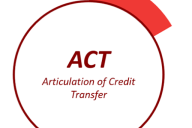You have /5 articles left.
Sign up for a free account or log in.
Higher education’s interest in microcredentials, digital badges and other alternate credentials is rising, with approximately 58 percent of institutions considering offering a digital credential.
In 2015 the American Association of Collegiate Registrars and Admissions Officers convened a track at its Technology and Transfer Summit to develop a framework for an “extended” transcript for capturing and effectively communicating a broader range of educational experiences and learning artifacts than are currently embodied by the contemporary academic record. AACRAO, working with Lumina Foundation, NASPA, NILOA, the Bill and Melinda Gates Foundation, and other higher education organizations, has since supported over 50 colleges and universities to enhance, develop and deploy comprehensive learner records (CLRs) in the U.S. This new type of learner record has gained considerable traction in recent years.
What is a CLR?
A CLR is an official record that speaks to the needs of today’s student, a lifelong learner who experiences learning and acquires knowledge in a variety of settings and institutions on their way to a bachelor’s degree and beyond. This credential reflects what was learned in an educational program. In this context, the educational program is a technical or higher education degree program at the postsecondary level. The U.S. higher education academic transcript remains currently the official document used to convey completed coursework and a degree or certificate awarded. The CLR is not a replacement for the transcript. Rather, it is an alternative expression to record and attest to outcomes of an educational program or activity. Its intent is to provide learners, employers and others with more granular, validated information that can be understood outside the academy. It can include learning outcomes or skills and other descriptive information derived from academic courses (in a manner similar to a transcript), but it also can include information about co-curricular activities, employment or other evidence of learning or acquired competencies. These expressions of learning must work together.
Although sometimes considered cryptic and steeped in higher educational jargon, the transcript nevertheless remains a very trusted and oft-used expression of learning. Standing behind the transcript are institutional governance structures, policies and practices to ensure the timeliness, quality and accuracy of the data recorded. The transcript’s audience can be confident that disciplinary experts have defined the curriculum, assessed the learner’s achievements and validly recorded learner data and an external, objective party (e.g., an accreditation body) has reviewed the institution’s processes and practices to do all of the above. Because of the above, the assertions on the transcript are trusted, accepted as true and presumed to have integrity. Thus, in a manner similar to the transcript, the CLR should carry these same characteristics in order to serve as an effective and accepted means of communicating a student’s attainment across multiple learning activities.
The Connection to the Workforce
The United States Chamber of Commerce Foundation, the American Workforce Policy Advisory Board (AWPAB) and many other organizations advanced important initiatives to develop similar summative learner records, which also included credentials from non–higher education issuers. This credential was more broadly named the learner and employment record (LER). As described by the AWPAB report, the LER is “a system that contains verifiable information about a person’s achievements spanning an inclusive range of contexts, whether education or training processes, formal or informal, classroom-based or workplace-based. LERs can seamlessly record, verify, transmit, and interpret information about learning achievements between learning institutions, businesses, and individuals.” Therefore, a CLR is the higher education contribution to the LER, providing verified credentials representing the skills and competencies achieved by the student during their academic career.
One of the key principles of LERs is the concept of learner self-sovereignty, which enables students to have agency over their credentials while maintaining the trust associated with the credential’s issuer. Self-sovereignty is often exercised through digital wallets that enable the learner to curate and share their credentials in a manner germane to the career opportunity they are exploring. Thus, interest in issuing and consuming verified, digital learner credentials has found a firm footing.
CLR Challenges
Adoption of the CLR and the dedication of resources to develop and implement a broader expression of learner achievement is an extension of existing transcript concepts and practices, but it also challenges traditional notions of what a transcript has been. For many good reasons, including credibility, consistency and interoperability, higher education has relied upon the transcript as the official record of student academic history. The reality is that the transcript remains the coin of the realm, and it still serves as the foundational employment credential for many jobs. The challenge is to retain the important characteristics of academic records while acknowledging the opportunity to innovate.
We have identified four challenges most institutions face when considering innovation with learner records.
- In most cases, the CLR is not intended to replace the transcript, so institutions need to explore and reframe the value propositions to the institution by viewing the work as primarily a service to its students. A common argument against adoption of the CLR is the lack of demand by other higher education institutions and the labor market—however, this is quickly changing as employers and schools innovate.
- Another challenge is a perceived (and sometimes actual) increased workload borne by faculty, instructors and staff to assess, collect and maintain the learning outcomes that are the foundation of these new types of records. The requirements and functional responsibilities should be openly addressed early in the CLR planning discussion.
- In addition, many institutions use a traditional transactional business model where a student (or recipient) is charged a fee for each release of their transcript. This revenue is potentially at risk if learner self-sovereignty (i.e., releasing the record directly to the student and enabling them to disclose it to whomever they choose) becomes a standard practice. New and innovative business models are being explored and implemented to address this funding challenge.
- Lastly, there are usually competing priorities for development resources to ensure the CLR’s compliance to an accepted data standard (e.g., 1EdTech CLR), which means that the crucial principle of credential interoperability may also be a hurdle. These resources should be acknowledged and addressed in the planning discussion as well.
AACRAO is working with partner organizations to address each of these challenges at a national level, with individual institutions and with our members. Successfully communicating the value proposition of the CLR/LER while addressing the financial, operational and technical hurdles is critical to broad adoption of the CLR in higher education.
Leveraging Registrars
AACRAO is a long-standing champion in the advancement of the learner record. We have collaboratively developed pilots, guidelines and best practices that allow for the expansion of the idea of the traditional record. An example of this effort is the 1EdTech (formerly IMS Global) CLR Implementation Guide. The work is now expanding beyond CLR interoperable technology, which represents a strong commitment to collaborative policy development at all levels—because registrars, our members, know that applying technology on top of flawed policies and processes will not succeed.
The key institutional official who is entrusted with ensuring the integrity of the learner record is the registrar. The registrar serves as the administrative proxy for the faculty and is responsible for and most engaged with artifacts that reflect learning—the most prominent being the transcript. The registrar provides administrative, operational and implementation support for new academic initiatives and defines and operates recording processes and practices to assure the validity of curriculum and learner information. Additionally, the registrar operates academic support systems, at scale, through which the curriculum is taught, recorded and expressed on behalf of the learner for those outside the institution. Thus, the registrar must play a vital and necessary role to support the expansion of the learner record and that their expressions beyond the institution possess integrity and validity and correctly represent the achievements of the learner. Building this trust enables these learner educational records to be accepted easily across institutions and into the broader talent marketplace for which the LER holds such promise.
We readily acknowledge the development of the field is uneven—not all institutions (or registrars) are ready for an expanded conversation about CLR and LER, but AACRAO is committed to continuing our partnerships to shape the conversation and to supporting institutional innovation by working through registrars as a key stakeholder in the adoption of leading practices to meet learner, marketplace and workforce needs.
AACRAO will support higher education institutions contributions of robust learning to the overall LER work by supporting through recommendations of academic record practices that protect the integrity and validity of these expressions of learner achievement, supporting the principles of interoperability and student-centered records, and continuing to seek collaboration and innovation partners.
Mark McConahay is retired associate vice provost and registrar at Indiana University at Bloomington and currently serves as an AACRAO consultant. Mike Simmons is retired assistant vice president of academic affairs at the University of North Texas and currently serves as strategic projects manager for AACRAO.


